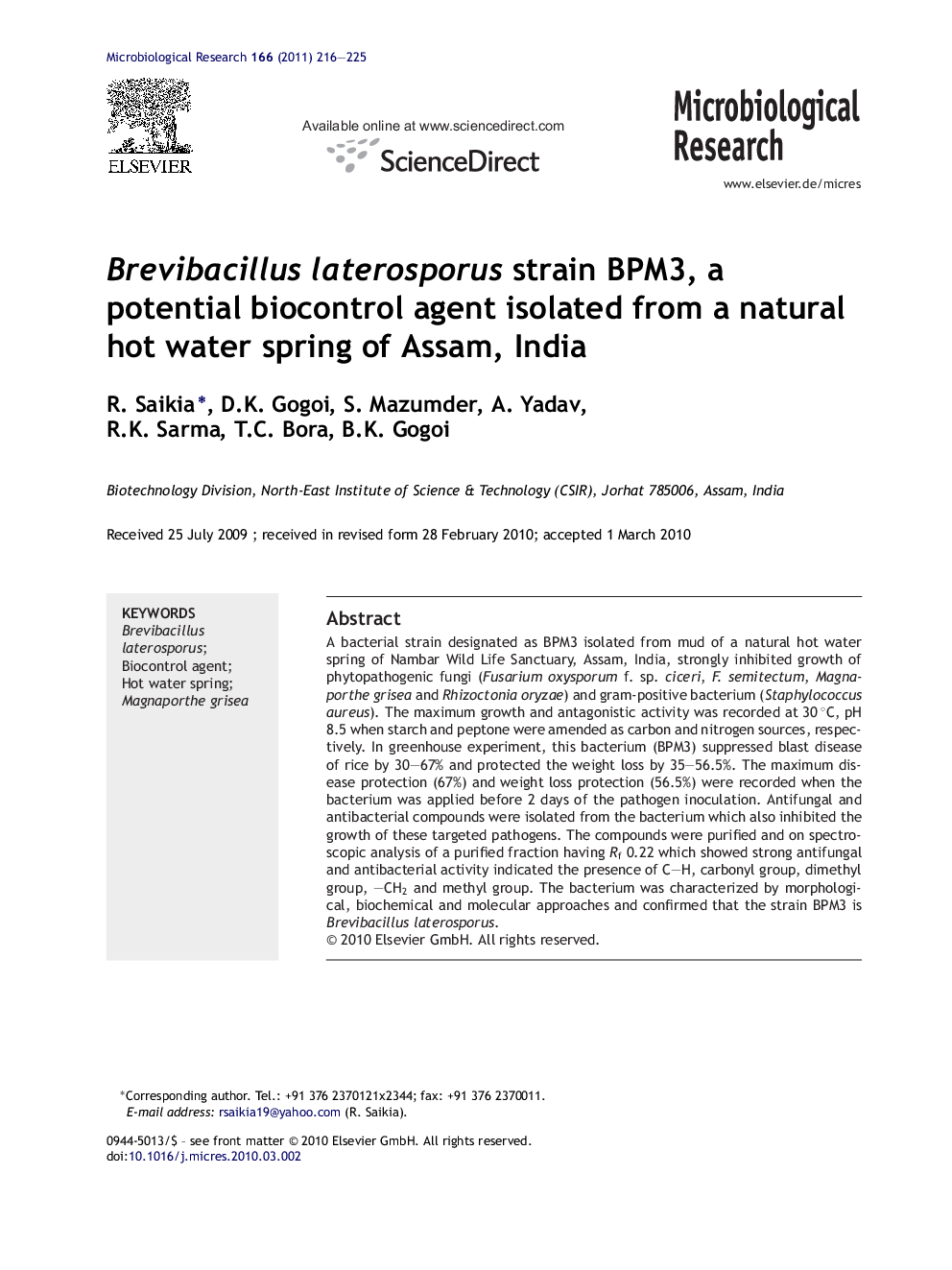| Article ID | Journal | Published Year | Pages | File Type |
|---|---|---|---|---|
| 2093078 | Microbiological Research | 2011 | 10 Pages |
A bacterial strain designated as BPM3 isolated from mud of a natural hot water spring of Nambar Wild Life Sanctuary, Assam, India, strongly inhibited growth of phytopathogenic fungi (Fusarium oxysporum f. sp. ciceri, F. semitectum, Magnaporthe grisea and Rhizoctonia oryzae) and gram-positive bacterium (Staphylococcus aureus). The maximum growth and antagonistic activity was recorded at 30 °C, pH 8.5 when starch and peptone were amended as carbon and nitrogen sources, respectively. In greenhouse experiment, this bacterium (BPM3) suppressed blast disease of rice by 30–67% and protected the weight loss by 35–56.5%. The maximum disease protection (67%) and weight loss protection (56.5%) were recorded when the bacterium was applied before 2 days of the pathogen inoculation. Antifungal and antibacterial compounds were isolated from the bacterium which also inhibited the growth of these targeted pathogens. The compounds were purified and on spectroscopic analysis of a purified fraction having Rf 0.22 which showed strong antifungal and antibacterial activity indicated the presence of C–H, carbonyl group, dimethyl group, –CH2 and methyl group. The bacterium was characterized by morphological, biochemical and molecular approaches and confirmed that the strain BPM3 is Brevibacillus laterosporus.
